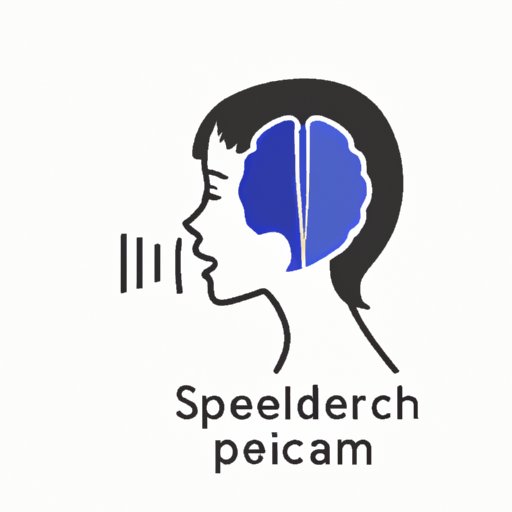Introduction
Have you ever wondered which side of the brain is responsible for speech? For those who have suffered from a brain injury or a speech disorder, this information may be helpful in understanding their condition and how to improve their communication skills. In recent years, scientists have made significant progress in uncovering the mysteries behind speech production. In this article, we’ll explore the hemispheric division of labor in the brain and the history of scientific research that has led to our understanding of speech and language processing.
The Hemispheric Division of Labor in the Brain
The human brain is divided into two hemispheres – the left and right. The left hemisphere is typically associated with language, speech, and logical reasoning, while the right hemisphere is associated with creativity, spatial reasoning, and emotional processing. However, recent research has shown that this division of labor is more nuanced than previously thought.
It is the left hemisphere of the brain that controls speech production in most people. This was discovered through various studies involving stroke patients with speech impairments and brain imaging techniques such as PET scans and fMRI. In stroke patients, those with left hemisphere damage were more likely to have speech disorders than those with right hemisphere damage. Brain imaging studies also showed that speech-related areas of the brain, such as Broca’s and Wernicke’s areas, are located in the left hemisphere in most individuals.
A Historical Examination of the Scientific Struggle
Scientists have been trying to understand the lateralization of the brain and language processing for centuries. Early theories suggested that the brain was a homogenous structure, and both hemispheres were equally involved in language processing. It wasn’t until the mid-1800s that researchers began to explore the idea of hemispheric specialization.
One of the most significant milestones in speech research was the discovery of Broca’s and Wernicke’s areas in the 19th century. Broca’s area, located in the left frontal lobe, is responsible for producing speech, while Wernicke’s area, located in the left temporal lobe, is responsible for understanding language. The discovery of these specific areas of the brain laid the foundation for understanding the localization of language processing.
Personal Narrative
For those who have experienced a speech disorder due to a brain injury, the struggle to communicate can be life-changing. One such individual is John, who suffered a severe brain injury in a car accident. John struggled with communication and often became frustrated when trying to express himself. Fortunately, with the help of speech therapy and the discovery of which side of the brain controls speech, John was able to regain some of his communication skills and improve his quality of life.
Diagnosis of Speech Disorders
Speech disorders can be caused by a variety of factors, including brain injury, neurological conditions, and developmental issues. Most speech disorders are diagnosed through a combination of observation, standardized tests, and imaging studies such as MRI and CT scans.
These tests are designed to determine which areas of the brain are involved in speech and language function. For example, the Wada test is a procedure in which one hemisphere of the brain is temporarily anesthetized to determine which hemisphere is responsible for language processing.
Speech Therapy
Speech therapy is a crucial tool for individuals with speech disorders. Through targeted exercises and techniques, speech therapists can help patients improve their communication skills and reduce frustration. One technique used in speech therapy is neuroplasticity, which involves rewiring the brain to compensate for damaged areas. With the discovery of which side of the brain controls speech, speech therapists can tailor their treatments to the specific areas of the brain involved in speech production.
Critical Analysis of Popular Beliefs
There is a popular belief that individuals are either left-brained (logical) or right-brained (creative), but this belief is a myth. While certain functions are localized in specific regions of the brain, both hemispheres work together to create a cohesive understanding of the world around us. Misconceptions about left and right-brain dominance can also impact the public’s understanding of speech and language disorders.
Ethical Implications
The exploration of the hemispheric division of labor in the brain has significant ethical implications. As we continue to uncover the mysteries behind speech production, it raises questions about what it means to be human and the nature of individuality. It is critical that we approach brain research with sensitivity and consideration for ethical implications.
Conclusion
Understanding which side of the brain controls speech can help those who have experienced speech disorders due to brain injury, neurological conditions, or developmental issues. With the help of diagnostic tests and speech therapy, individuals can improve their communication skills and regain some of their independence. It is also important to critically analyze popular beliefs about left and right-brain dominance and approach brain research with sensitivity and consideration for ethical implications.
